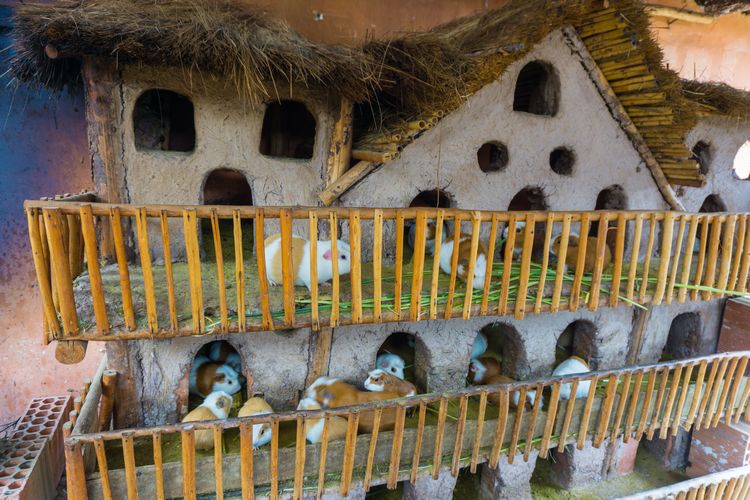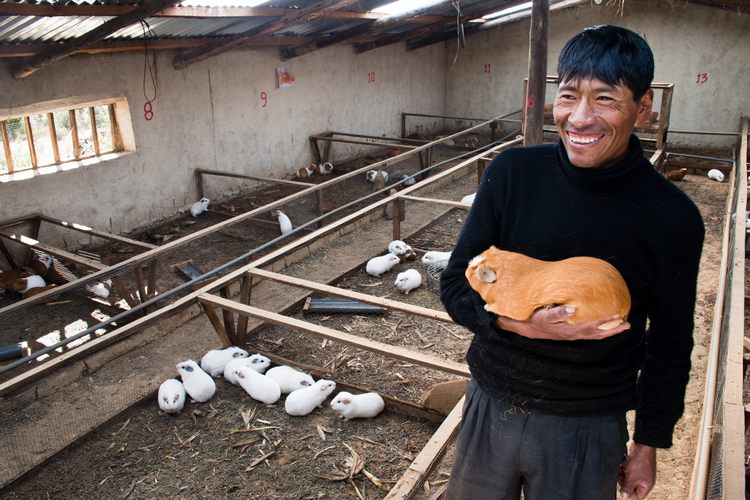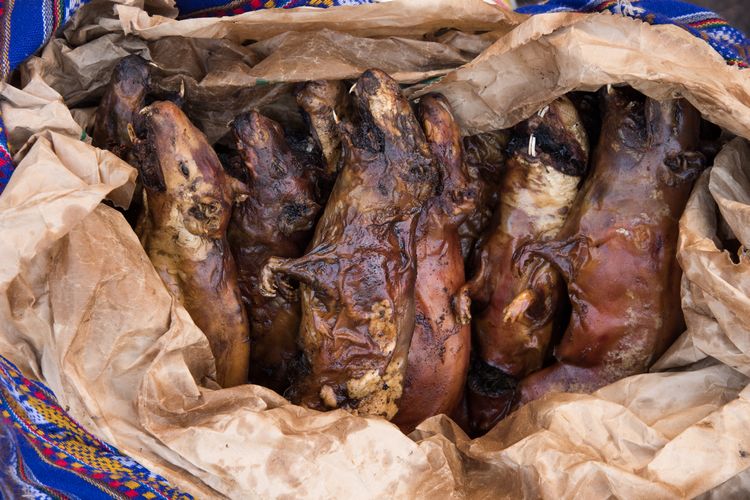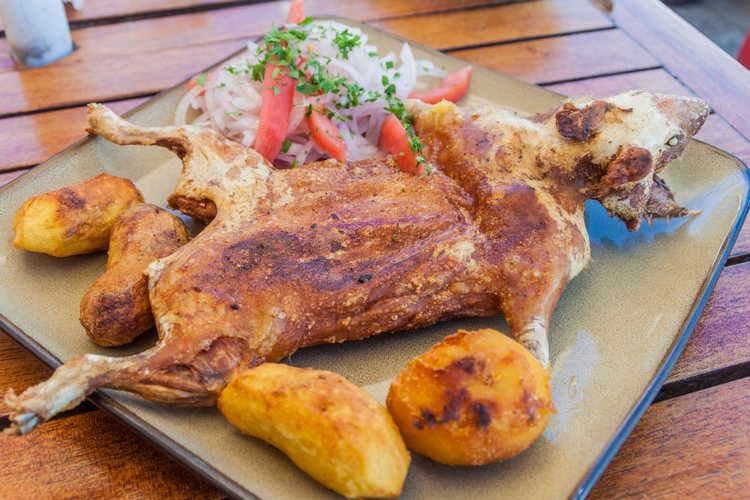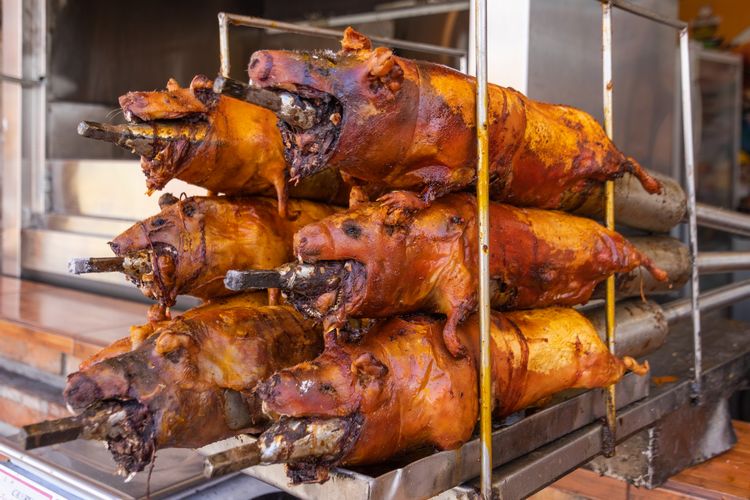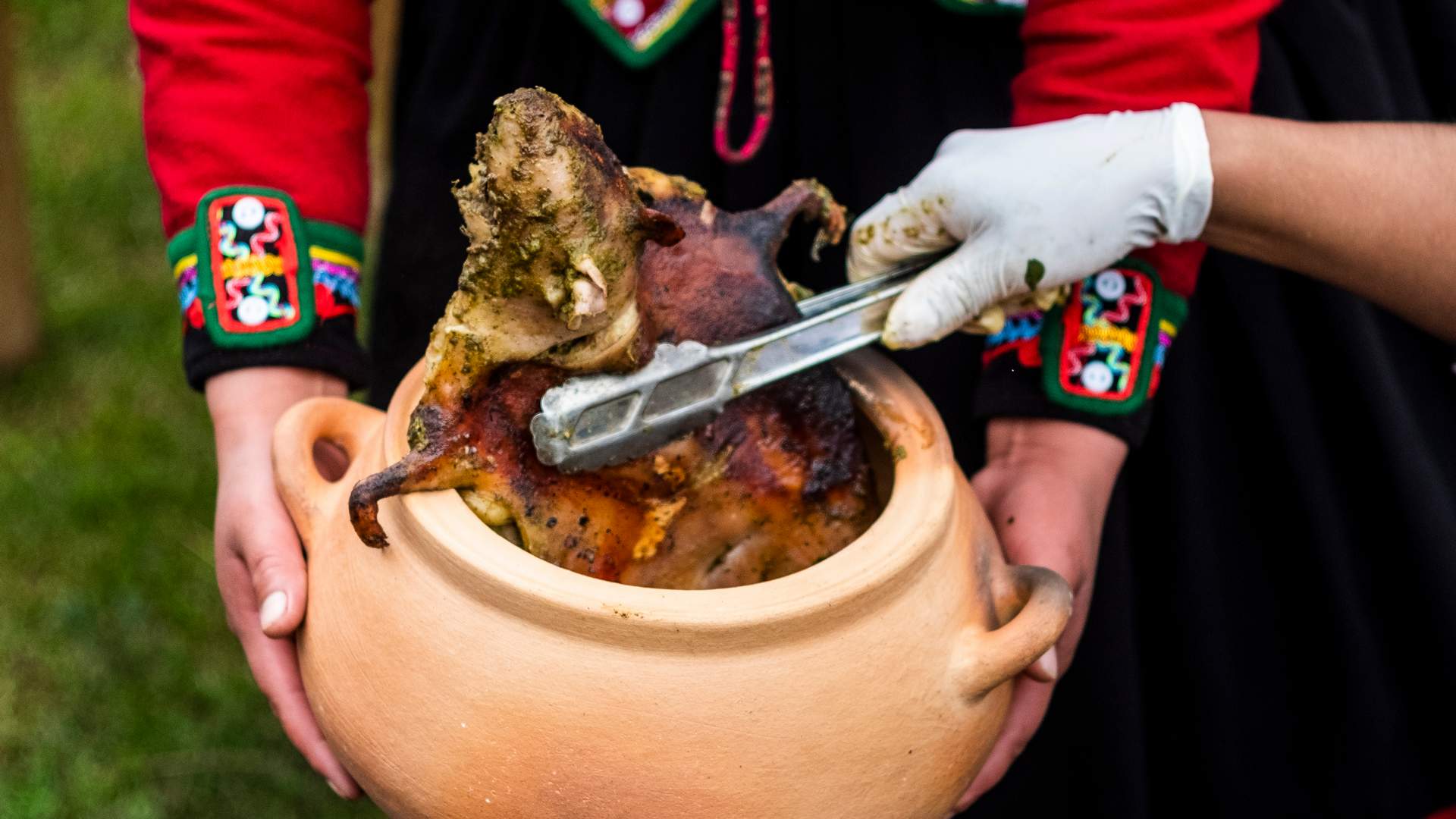Most people who come from Western countries in North America or Europe have heard of guinea pigs and have known someone who has had one as a pet. In South America however, the Cuy is a culinary delicacy in Peru which is known for its rich flavour and texture, and has been used as a food for over 5000 years in the Andean highlands of Peru, Bolivia, and small parts of Ecuador and Colombia. Make sure you don’t miss out on this traditional dish when you travel to Peru.
The Origins of The Guinea Pig
The “Cuy” was originally domesticated for its meat in the Andes. It was usually eaten by indigenous communities during significant ceremonial events as a delicacy and reserved for special occasions, but the Cuy has a history of much greater significance in the Andes than just food. It can often be seen in the elaborate ceramic and gold artwork of the Moche culture from 100-700 AD on the northern coast of Peru, and it can also be recognized in Folklore tales and traditions of the past. The exchange of Cuy as gifts, their use in social and religious ceremonies, and for their use in healing. Even today the Cuy is used by Curanderos, or folk doctors, to diagnose and cure diseases by moving the animal all over a person’s body, and cutting the animal open to determine the illness. This type of healing is used in many areas where Western medicine is either unavailable or untrusted.
One of the reasons that Cuy is so popular to raise is the fact that it is a very low-maintenance animal, needing little space, food, and attention to thrive. It breeds quickly with up to 5 litters a year and an average of three pups per litter. Many households have permanent cages set up with dozens of Cuyes who often only need fresh alfalfa to provide them with the nutrients and water they need. In addition to the simple and easy standards of raising these animals, the Cuy meat is extremely high in protein and low in fat and cholesterol, and is very nutritious.
Different ways to prepare Cuy
– Cuy al Horno (Baked Guinea pig)
This is one of the best guinea pig recipes, which is a traditional Peruvian dish. This recipe involves that the guinea pig be oven roasted, and it is often served with potatoes and a side salad. Cuy al horno is a simple dish full of flavour and is sure to please even the pickiest of eaters. This recipe is worth trying if you are looking for a new and exciting way to prepare a guinea pig. Although you will find it in almost every tourist restaurant in the country, keep in mind that the freshest guinea pigs can be found in Cusco. So make sure you try this culinary deight on your trip to Peru!
– Cuy Chacteado
The guinea pig is coated in seasoned flour and deep-fried in vegetable oil until it becomes crunchy. In some restaurants, the chefs will use a big stone to deepen the pan for the guinea pig to be easily broken up. The deep-fried guinea pig is then served with potatoes and salad. Cuy Chacteado is called the Arequipa region style, where guinea pig is mixed with spices and then fried. The result is a juicy, flavourful, and truly unique dish you won’t find anywhere else. If you are visiting Arequipa on your vacations in Peru, make sure you give this regional dish a try!
– Cuy al Palo
Cuy al Palo, or Guinea pig on a stick, is typical in Peru, and is a common way the locals prepare this delectable dish. Many villagers do not have access to an oven in the countryside, so the best way to prepare is to roast in front of their “Qonchas,” or wood-fired stoves. This style can be seen in all the Sacred Valley and is available for travellers to sample as they pass through the valley on their trip to Peru.
– Pepian de Cuy
Pepián de cuy is a hearty stew made with guinea pig meat and corn and seasoned with peppers, onions, and peanuts. This hearty stew is generally served with rice and avocado.
– Pachamanca
Pachamanca is a traditional way of cooking meat, vegetables, and beans, using hot stones, and all the ingredients are buried underground. This style has been around for centuries and is very popular in Andean communities. Due to the difficulty in making a pachamanca, this dish is prepared only for big celebrations and important dates. Try to travel to Peru when this traditional dish is being served through June, July and August.
Ask us for more information about sampling this traditional dish, especially when you travel to Peru and visit the Andes!

